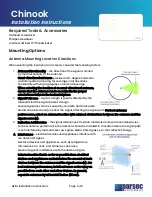
Device Description HG G-71450/1/3/5-A | English, Revision 02 | Date: 06.06.2019
36
Chapter 7 – Interfaces: CANopen® (HG G
-
71453)
Note that a CAN identifier or for CANopen® the combination CAN identifier and
node identifier must always be unique.
Table 29
CAN: PDO operating modes
Operating mode Explanation
Cyclic
Every nth Sync telegram will transmit data
Acyclic
Sends if an event has occurred since the last Sync telegram
Synchronous
Data are transmitted after receipt of a Sync telegram
Asynchronous
Data is transmitted event-controlled
RTR
Only on request by a remote frame
Inhibit Time
Minimum time span that must elapse before the next trans
-
mission of the same PDO
Event Time
Triggers an event at expiration. Restarted after each event.
Table 30
Definitions CAN/CANopen®
Abbrevia
-
tions
Name
Meaning
PDO
Process data objects
Maximum 8 bytes of process data
TPDO
Transmit-PDO
Process data sent from a device
RPDO
Receive-PDO
Process data received from a device
SDO
Service data objects
Used for reading and writing device
parameters. No size limitation
Sync
Synchronization telegram Bus-wide telegram sent by the
CANopen® Master
–
CAN-Identifier
The address at which a PDO,SDO is sent
–
Node ID
For CANopen®, the address of the device
that is added to the CAN-Identifier
Table 31
CAN: Bit and byte sequences
Name
Meaning
Low Byte First Little-Endian format, Intel format
The byte with the smallest value of a multibyte value is sent first
High Byte First Big-Endian format, Motorola format
The most significant byte of a multibyte value is sent first
Left-justified
Sequence of bits in a byte from left (most significant)
to the right (smallest)
Table 32
CANopen® operating mode
Name
Significance
Stopped
Only network management services executable
Pre-Operational
Full configuration possible, no transmission of PDOs
Operational
Full configuration possible, set PDOs are transmitted
















































